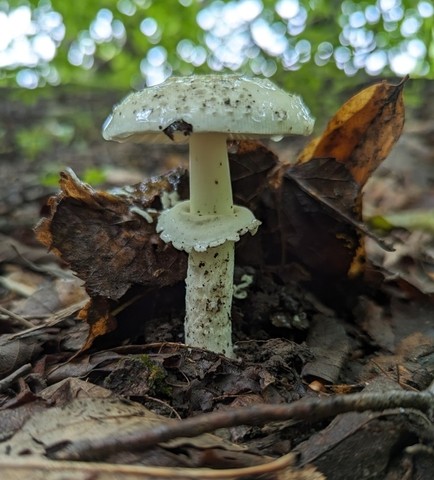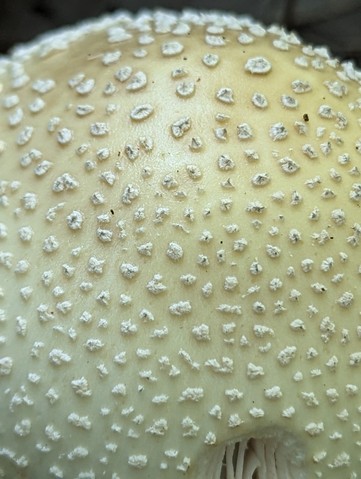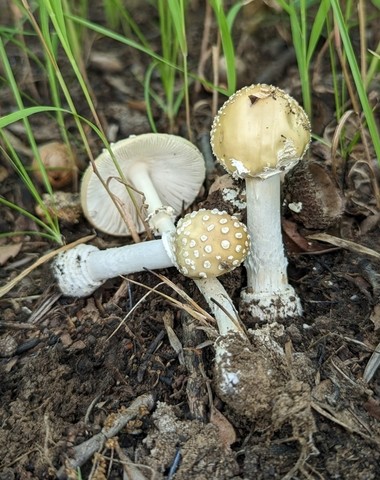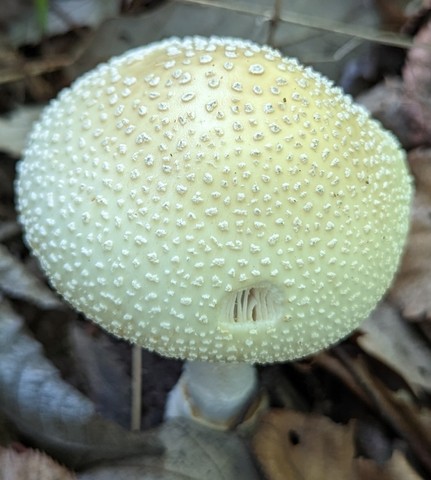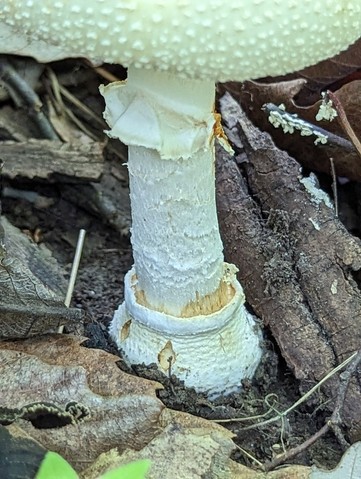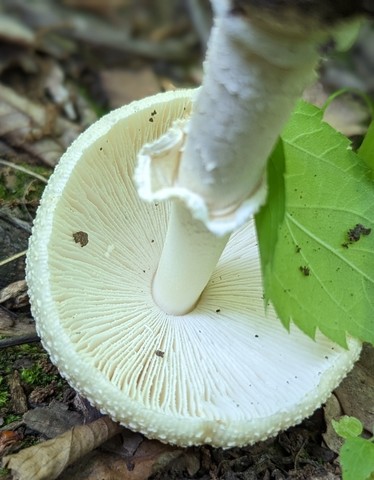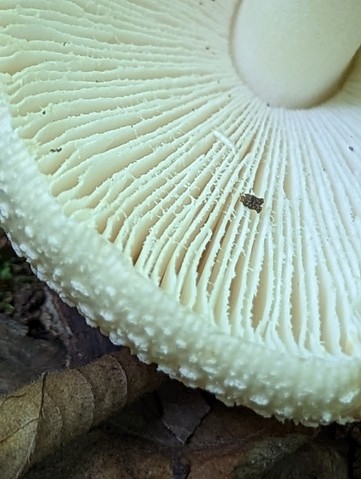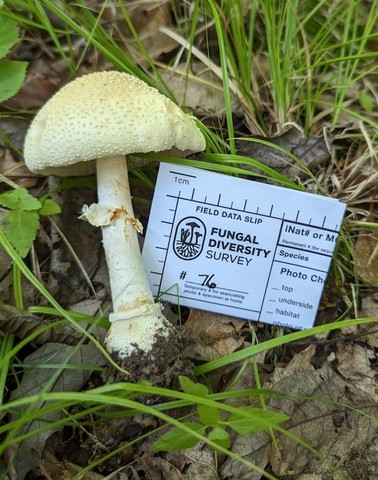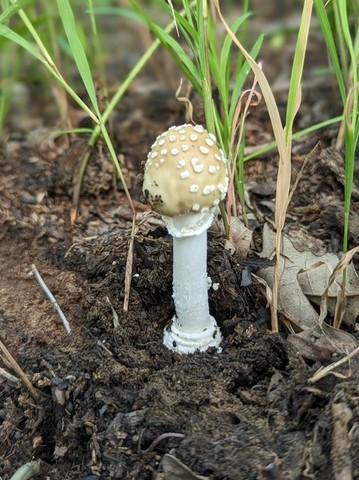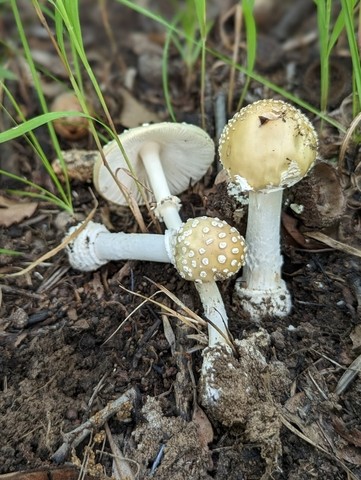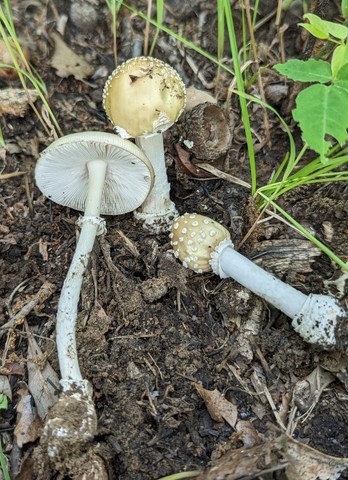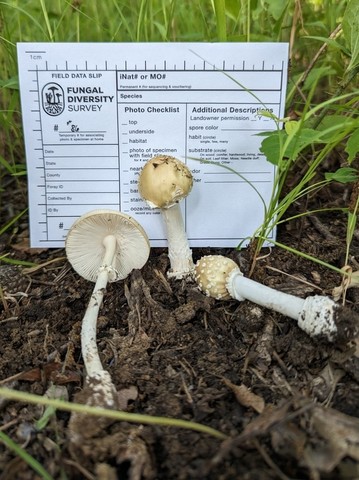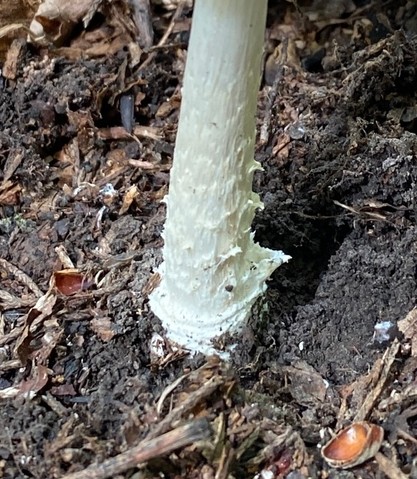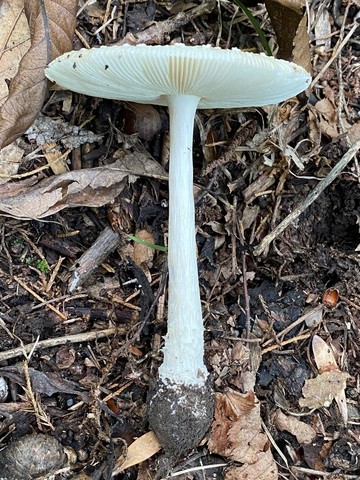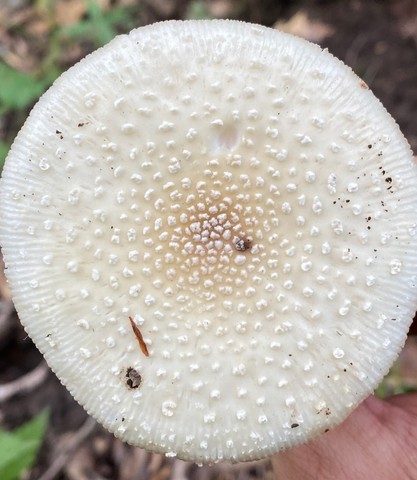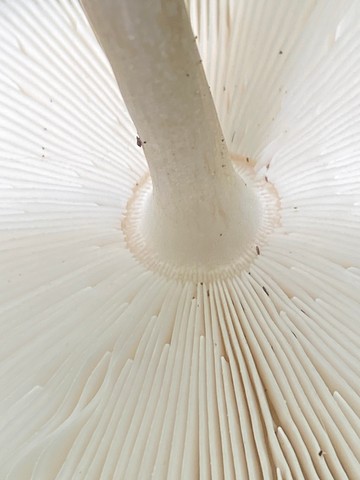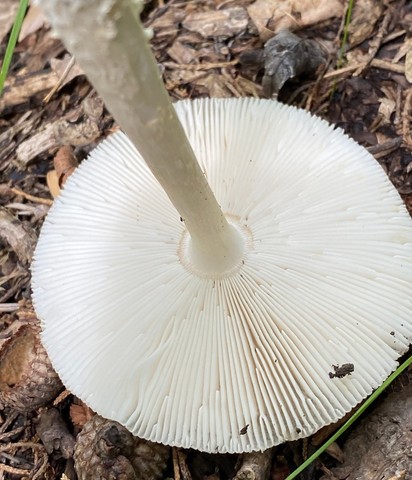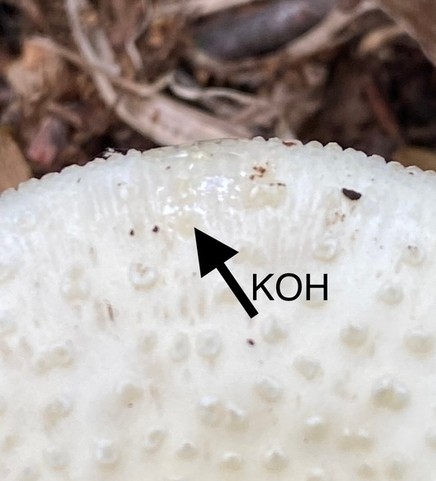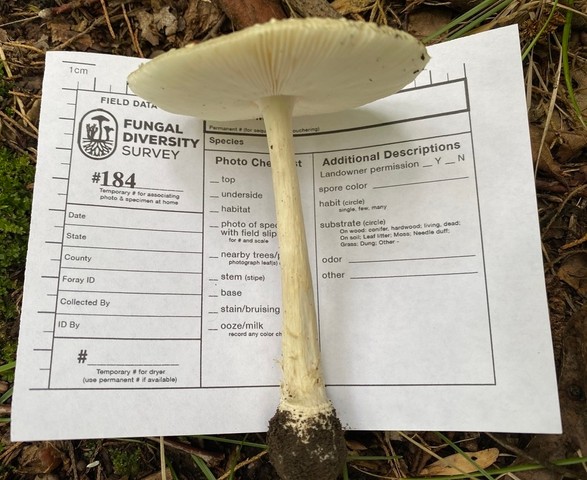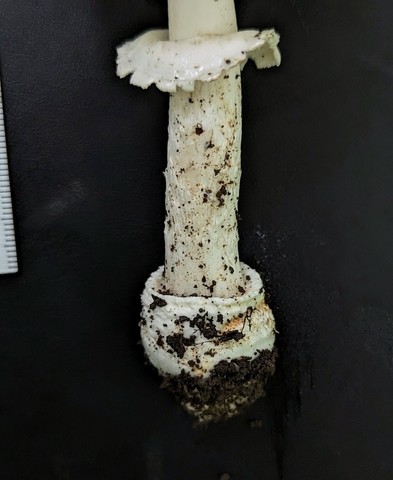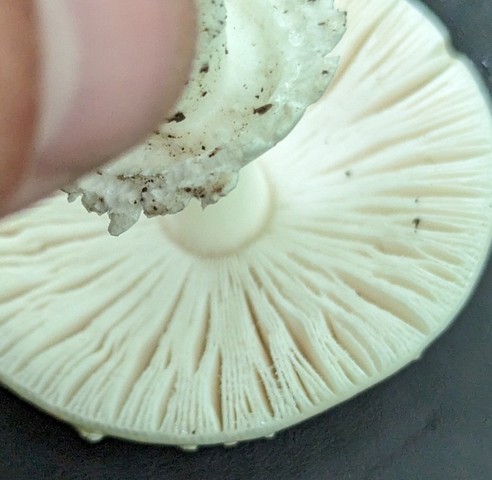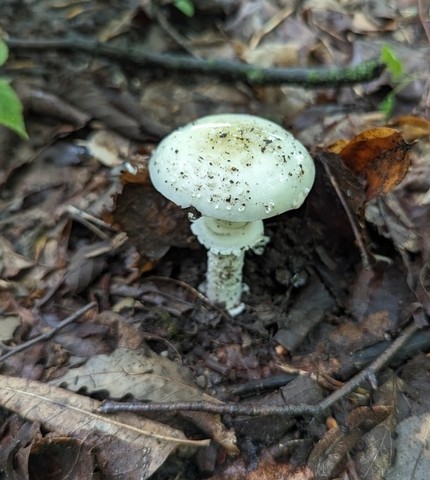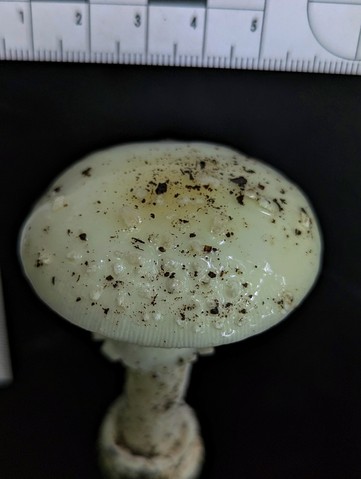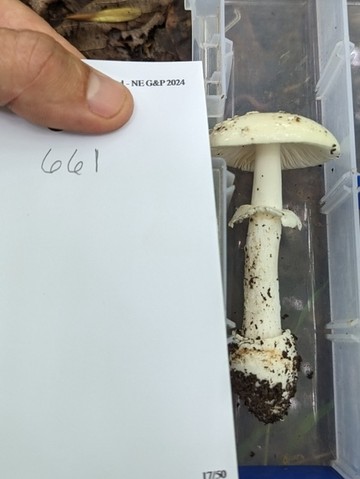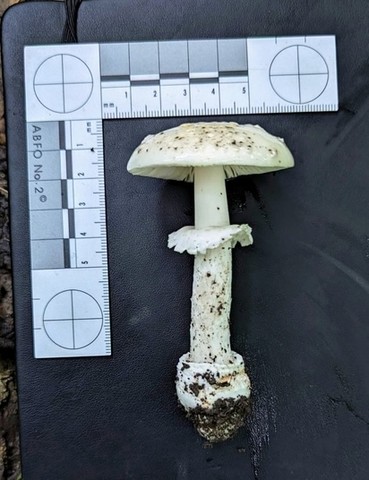White Panther
Amanita multisquamosa
Life > Fungi > Basidiomycota > Agaricomycotina > Agaricomycetes > Agaricomycetidae > Agaricales > Pluteineae > Amanitaceae > Amanita > Amanita.Subgenus > Amanita.Section > Pantherinae.Subsection
Description
The White Panther (Amanita multisquamosa) is a presumed toxic, mycorrhizal mushroom that fruits in the summer in woodland settings. These have been observed in Indian Cave State Park in eastern Nebraska in an Oak/Hickory woodland.
The fruiting body is mostly white, with a yellow or tan cap center. The cap is adorned with white, removable warts. The gill attachment is free to nearly attached (acutely adnexed), and the gill spacing is crowded. This species usually features a skirt of tissue on the stem (annulus), but sometimes the skirt falls off and/or is eaten by bugs. It has a bulbous base with a collar-like cup (volva) and sometimes transient velar tissue extending further up the stem.
Observations
June 8th, 2023 Indian Cave State Park
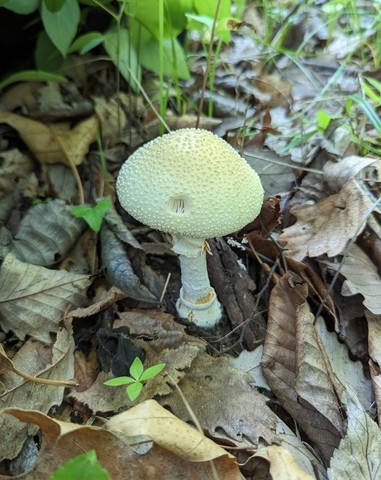
#76
Growing in open mixed oak/hickory woodland.
- Nearby Trees: Chinkapin oak, American Hophornbeam, American Linden, Shagbark Hickory, Elm, Red Mulberry, Bur Oak, and Black Oak.
- Pileipellis tacky with removable veil remnants. Stipe slightly collapsible (hollow or with pith).
June 12th, 2023 Indian Cave State Park
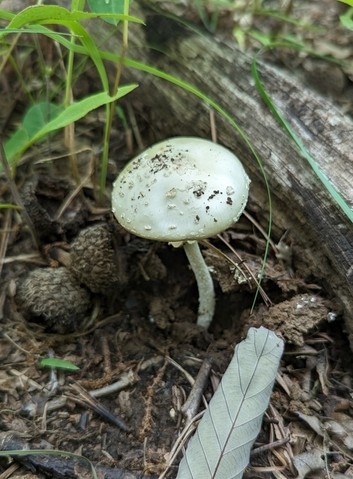
86
Growing on thin ridge top prairie remnants near bur oak, shagbark hickory, Chinkapin oak, and distant black oak in oak/hickory woodland. Tastes non distinctive. Pileipellis tacky when young/fresh.
July 11th, 2023 Indian Cave State Park
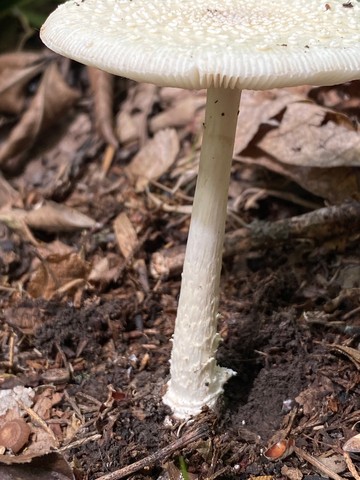
#184
- Growing solitarily in open mixed oak/hickory woodland.
- Nearby Trees: Eastern Red Cedar, American Hophornbeam, Northern Red Oak, Ash, American Linden, and Shagbark Hickory.
- Cap adorned with removable warts.
- Lammellae serrated.
- No annulus present (potentially removed).
- Volva with concentric scaly rings.
Smell: not distinctive. Taste: not distinctive. KOH: negative on cap.
GTCGTAACAAGGTTTCCGTAGGTGAACCTGCGGAAGGATCATTATTGAAATAAAAAAACTCAGGCAGGGGGGGAGTGTGGTTGTAGCTGGCCCCCTAATAAGGGCATGTGCACACTGTCTCTTTCTCTTGTTTGTTTTTTTCATTCTTTCCACTTGTGCACTGCTTGTAGGCAGCCTGGCATTGTTCGGGTTGTCTATGATTTTCTTTTACATACATGAATCATTGTTGTACAGAATGTGATAAAAATGAATAATACAACTTTCAACAACGGATCTCTTGGCTCTCGCATCGATGAAGAACGCAGCGAAATGCGATAAGTAATGTGAATTGCAGAATTCAGTGAATCATCGAATCTTTGAACGCATCTTGCGCTCCTTGGTATTCCGAGGAGCATGCCTGTTTGAGTGTCATTAAATTCTGTCAAAACATGCACTTGAGTGTGTTTTGGATTGTGGGAGTGTCTGCTGGCTTTATATGAGTCAGCTCTCCTGAAAGACATTAGCTTTGGAGGGATGTGCCAAGTCACTTCTGCCTTTCCATTGGTGTGATAGATGAATAAACTTATCTACGCCAGGAAAGCAGGTTGCAGGTGATGCACTGTGATCTCTCTGCTCTCTAATTGACATTTGTCTGATAACTTGACCTCAAATCAGGTAGGACTACCCGCTGAACTTView MycoMap DNA Results
May 30th, 2024 Indian Cave State Park
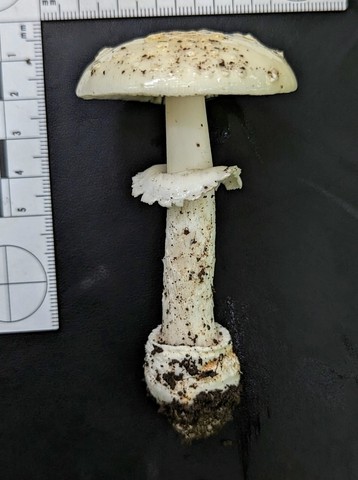
661
- Growing solitarily in well shaded mixed oak/hickory woodland, near walking trail.
- Nearby Trees: American Hophornbeam, American Linden, Northern Red Oak, Shagbark Hickory, Ash, Chinkapin Oak.
References
Kuo, M. (2013, April). Amanita multisquamosa. Retrieved from the MushroomExpert.Com Web site: http://www.mushroomexpert.com/amanita_multisquamosa.html
Created December 15, 2025 at 10:41 AM
